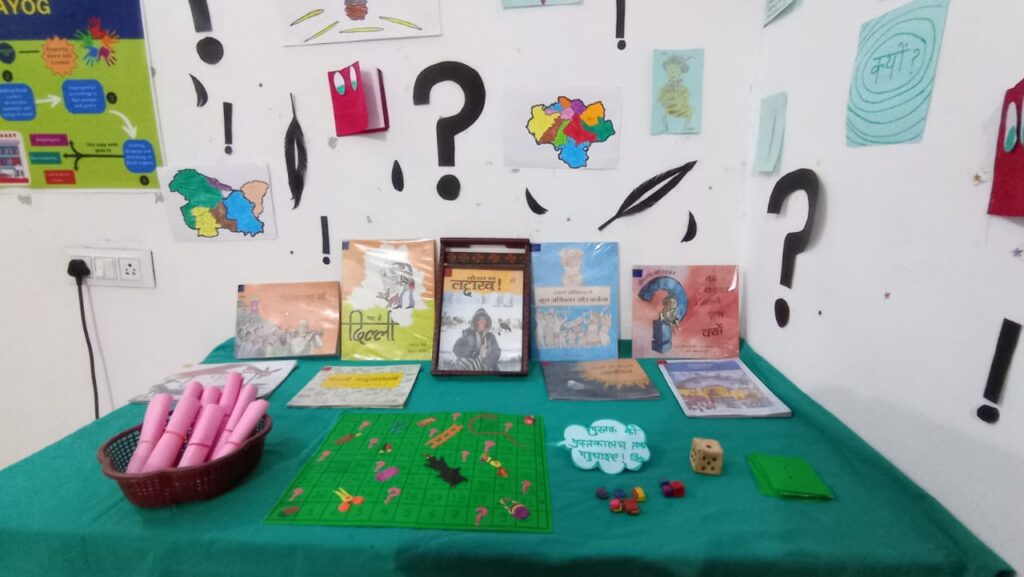Design thinking is often seen as a skill exclusive to professional designers. I used to think the same, until recently. The midpoint training at India Fellow was my first exposure to the topic. After the session, we got to interact with Mudita from The Design Village. All this piqued my interest on the topic and led me to believe that anyone can practice it in their work and life for problem-solving. It doesn’t have to stay limited to the designers by educational qualification. As a mindset, it can help transcend boundaries and empower us to think creatively, empathetically and collaboratively.
Design thinking, specially ‘Human Centred Design’ essentially emphasises on keeping people at the centre and given that, understanding and addressing their needs. At first, it sounded self-explanatory, but while doing the wallet exercise I realised that there was a lot to it. It compelled me to empathise with the user, a co-fellow in this case and challenged my assumptions. The first one was that everyone uses a wallet. Turns out, no! And if not, what are they using to fulfil the need of carrying cash, cards and ID? Is that even a need? These questions built curiosity to listen and understand the user, and led me to derive some key learnings like:
1. Be Curious And Observe Closely
While interacting with someone, one needs be curious why they are saying or doing what they are saying or doing. It helps deepen our understanding of them. Being observant takes us into the finer details, beyond surface-level observations. For example, I had never thought that a conversation over usage of a wallet would lead me to derive an insight about the user that ‘his primary need is to assure his family of his safety when he is away from home.’ As we look at multiple issues that are intertwined, it helps to have this lens and keep humans at the centre.
2. Seeking To Build Empathy
Curiosity leads to empathy with people and systems, building connections and gaining new perspectives. When designing products or solutions, the challenge lies in truly understanding the people we are designing with. For the longest time, I was stuck in designing the ‘ideal’ wallet without even knowing if my user needs a wallet, when the real purpose was to dig deeper into our his needs. This would require knowing his mental models and that would take much more time than just making assumptions and acting on it.
3. Framework Is Your Friend
One of the biggest virtues of design thinking is that it provides us a framework to define, ideate, prototype and test the product. We also did a marshmallow experiment to understand the importance of testing an idea at an early stage. The key lesson I learned here was, ‘Fail Fast, iterate and refine!’. Putting to test the product in early stages, gathering feedback, and then refining it is the key for a better product. This allows for a space for collaboration where multiple perspectives by people from different backgrounds can help in improving the design.

Applying Design Thinking Mindset to Processes, Plans And Frameworks
After the initial introduction, it was time to learn by applying it in my work. In one of my earlier blogs I had mentioned that ‘Education is probably the only space, where the primary consumer (child) does not have a say in what they consume.‘ The design thinking approach can take us closer in keeping children at the centre and bridging this gap. I design library sessions on a weekly basis to be implemented in government schools that Prayog works with. The mindset of design becomes highly valuable while creating library games and engagement activities, keeping in mind the context of children.

While it offers numerous benefits, it is important to acknowledge the limitations of an approach. Design thinking, being focused on problem-solving may not always be suitable when we are looking at understanding a situation. It essentially starts with declaring something as a problem first, which may not be required all the time.
In the social development work, I am able to observe and identify examples of design thinking empowering communities and enabling them to co-create impactful solutions. Even with its limitations, its potential to solve issues in various contexts cannot be ignored. It opens up a world of possibilities and encourages us to become creative problem-solvers regardless of our diverse professional backgrounds.




0 Comments